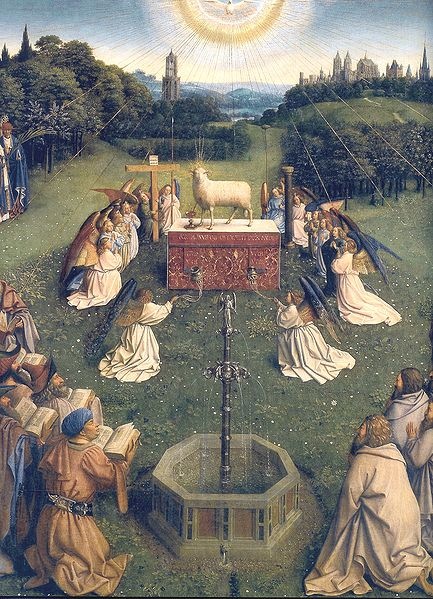The Garden and the City
 October 7, 2012 |
October 7, 2012 |  ∞
∞ 
Eric Jacobson, writing for Christianity Today, reflects on the role theology plays in shaping views of our cities:
Evangelicals have been tempted to believe that to be spiritual is to deny or ignore the parts of our lives that have to do with our physical existence. But when we think of eternity in the context of a real physical place, we tend to take the physicality of our lives more seriously in the here and now.
This is a good development, and I applaud it heartily. However, it also leads us to another tendency in evangelical theology. Evangelicals have also been tempted to think of their eternal reward as a return to the simplicity of Eden, more than a journey to the New Jerusalem. We have longed for pristine naturalistic settings of fields and forests and the simplicity of the organic nuclear family as the context of our eternal existence.
We have pictured heaven in these terms, rather than making room in our imagination for good (read: God-honoring) cultural developments and the beautiful complexities (read: shalom) of life in the society of others as the context of our future existence.
I think it is instructive to contemplate Heaven as it represents the ideal and while we may fall short of the ideal it gives us a context to strive for. This notion that using the ideal of heaven as a tool for crafting the places of earth brings me to my architectural roots. I distinctly remember one of my first introductions to urban design theory at Andrews University. Philip Bess, one of our professors, gave a lecture that was an esoteric argument for urban design based on the heavenly ideal as imagined by a painting: Van Eyck’s Ghent Altarpiece panel “The Adoration of the Lamb”. His lecture was basically a verbal version of this article with the main point being:
In addition to this theological order of iconography, however, there is another order of iconography that is at the same time both biblical and cross-cultural, explicit in Christian scripture but common to the rest of humanity as well. This is the iconography that forms the context of the Adoration of the Lamb, specifically the representation of Heaven as both a garden and a city, as the New Eden and the New Jerusalem. Architectural historian Norris Kelly Smith suggests in his 1980 essay “Crisis in Jerusalem” that, more ingeniously than any painting in western art, the Ghent Altarpiece manages to represent together the usually disparate biblical themes of Eden and Jerusalem.
If this painting represents the “Good Life”, the ideal of heaven, it suggests an appropriate context for our earthly lives. Specifically, it suggests that the good life is one in which two contexts are equally represented. First, there is the community or polis - the communal habitation of people existing in harmony and unity. Second, there is pristine nature or garden - a place of respite and renewal. These two are unique in form and function and they are distinctly delineated. There is no muddled middle ground, just city and garden. It is this duality - this equilibrium of communal/individual, urban/rural, built/pristine - that truly speaks to who we are. The ideal context for life is actually two: the city and the garden.

Reader Comments